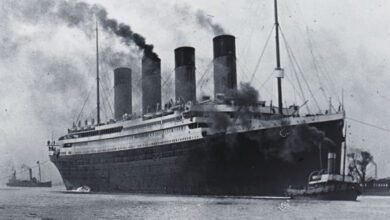Tragedy in the Fog: The Tenerife Airport Disaster and Its Lasting Impact on Aviation Safety
On March 27, 1977, one of the most catastrophic aviation disasters in history occurred at Los Rodeos Airport (now Tenerife North Airport) on the Spanish island of Tenerife, Canary Islands. The collision between two Boeing 747 jumbo jets, one belonging to KLM and the other to Pan American World Airways (Pan Am), resulted in the tragic loss of 583 lives and forever changed aviation safety protocols.
The disaster unfolded in a series of unfortunate events compounded by miscommunications, poor weather conditions, and critical decision-making errors. Both aircraft were diverted to Tenerife from Gran Canaria Airport due to a terrorist bombing threat. The small airport at Tenerife was overwhelmed with the sudden influx of diverted flights, causing significant congestion on the taxiways and limiting visibility.
The accident occurred in dense fog at the airport, significantly reducing visibility for pilots and the control tower. The KLM flight was attempting to take off while the Pan Am flight was still taxiing on the same runway, leading to a catastrophic collision. The KLM aircraft managed to get airborne briefly before slamming into the Pan Am plane, causing both jets to erupt in flames.
The immediate aftermath of the crash was chaos and confusion, with rescue teams struggling to reach the victims due to the dense fog and the fire’s intensity. The disaster led to the deaths of all 248 passengers and crew on the KLM plane and 335 passengers and crew on the Pan Am flight, with 61 survivors from the Pan Am flight.
The Tenerife Airport Disaster prompted a thorough investigation, which highlighted several key factors contributing to the accident. These included language barriers leading to miscommunication between the cockpit crew and air traffic control, the airport’s inadequate infrastructure to handle the unexpected traffic, and the absence of ground radar at the time, which could have prevented the tragedy.
In the wake of the disaster, significant changes were implemented in international aviation safety standards and procedures. One of the most notable outcomes was the establishment of standardized phraseology in air traffic communication to avoid misunderstandings. The disaster also underscored the importance of crew resource management (CRM) training, which focuses on communication, leadership, and decision-making in the cockpit.
Additionally, advancements in technology, such as the development and mandatory implementation of ground radar and more sophisticated air traffic control systems, were accelerated to enhance safety and prevent similar accidents in the future.
The Tenerife Airport Disaster remains a sombre reminder of the importance of safety in aviation and the dire consequences when communication fails. It serves as a pivotal learning point in aviation history, emphasizing the need for continuous improvement in safety protocols, training, and technology to protect lives. The legacy of those lost in the tragedy lives on in the form of safer skies for future generations of air travellers.





